The week at a glance
- Pacific Swift briefly in Aberdeenshire
- Black-browed Albatross at Bempton Cliffs and elsewhere before returning to Germany
- American White-winged Scoter in Aberdeenshire
- European Bee-eaters still in Nottinghamshire
- Oriental Plover in Norway
In the wake of sightings of Pacific Swift in The Netherlands on 12 June and Iceland on 24 June, the species was firmly on the radar for a British occurrence. Reasonable numbers of Common Swifts moved through Spurn in mid-June, a site that has received four of the seven Pacific Swifts to have turned up in Britain in the past, so hopes were high that the recent bird(s) would get caught up in the southbound torrent, but the push of Commons fizzled out in the last few days of June and thoughts of the rarer species were quelled for the time being. After all, with a White-throated Needletail last week, we were probably being a tad greedy. However, the window of opportunity was still open: early July offers good odds and a strong swift movement is by no means a prerequisite for a record. News broke late in the morning of 2nd that a Pacific Swift, Scotland's first, was racing around the quarry at Longhaven, Aberdeenshire. It stuck around for less than an hour, so few managed to connect, but the aerial maestro took us all back to 2013 when both a White-throated Needletail and a Pacific Swift also turned up within weeks of each other.
Even more tantalising was the return of the adult Black-browed Albatross to East Yorkshire, where it was found ensconced on the cliffs at Bempton for just under 2.5 hours on the afternoon of 28th. Having made a number of brief appearances in the same area over a six-day spell in mid-May, presumably stationing itself on a ledge out of sight, it looked like this might be the moment we've all been waiting for, but after giving a final fly-past at 3 pm, it vanished into the ether once more. The story continued the following morning, when the albatross was clocked off Whitburn, Co Durham, early in the day before flying north through the Farne Islands, Northumberland, just before noon. It passed Eyemouth then St Abbs, Borders, in mid-afternoon and then sailed by Dunbar and Seacliff, Lothian, in the evening. Two days later it was back in Germany, but one suspects its itchy wings will bring it our way again sooner or later, hopefully giving itself up to the masses next time.
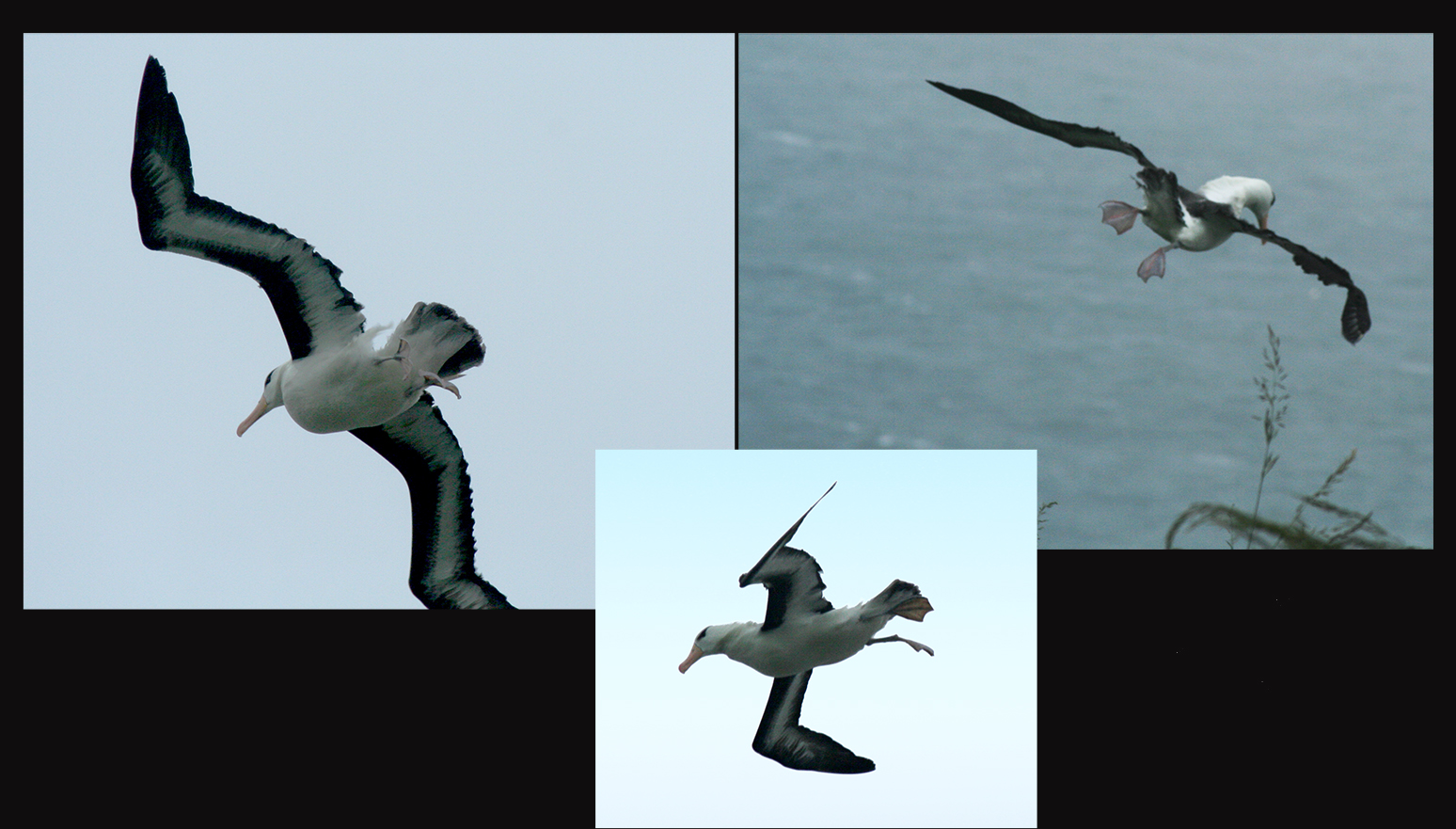
Black-browed Albatross, Bempton Cliffs RSPB, East Yorkshire (Photo: Ali Barratt).
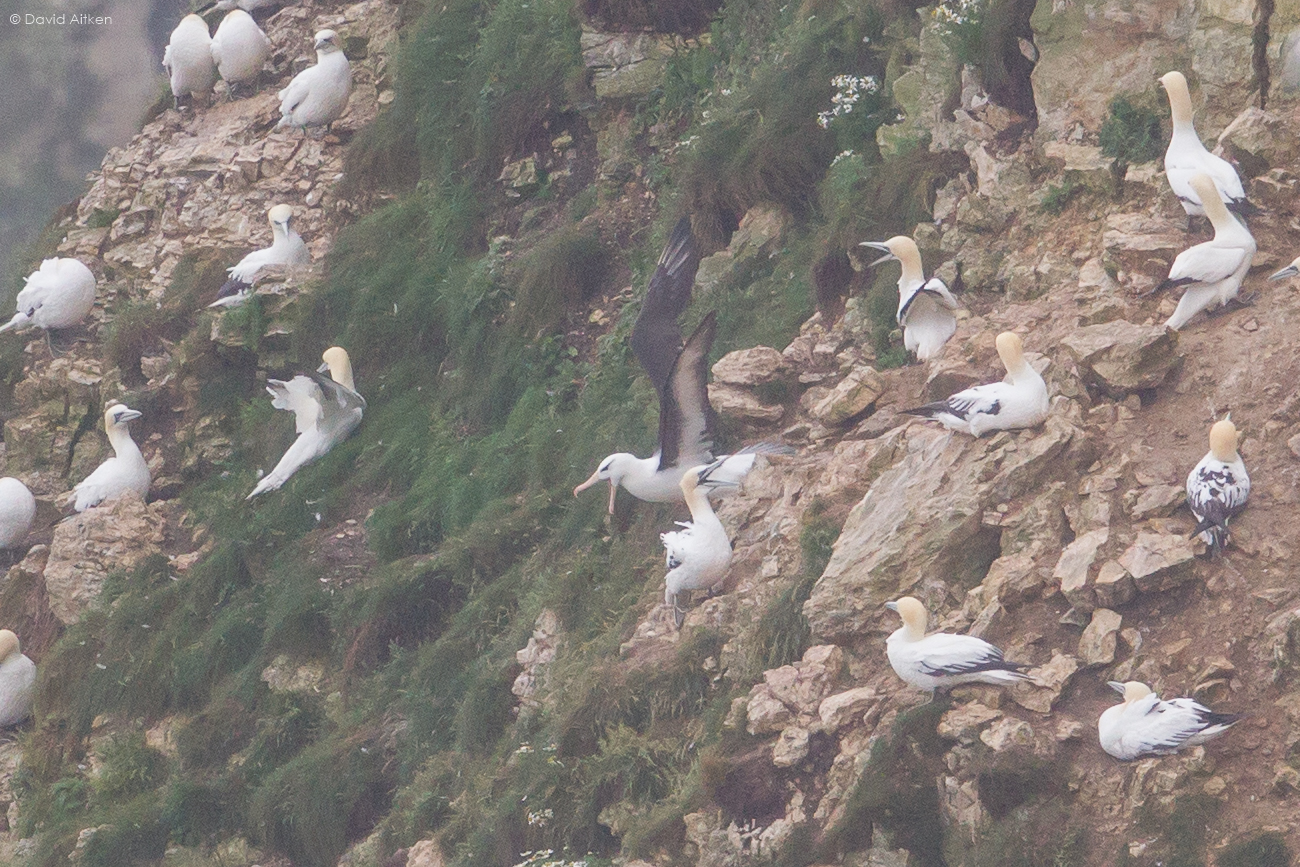
Black-browed Albatross, Bempton Cliffs RSPB, East Yorkshire (Photo: David Aitken).
Aberdeenshire secured another of the week's top-billing rarities with what we can surely assume to be the returning adult drake American White-winged Scoter amid the rafts of moulting scoters off Blackdog from 2-4th. Last year, it was first reported on 25 June and it is possible that the bird widely twitched as a first-summer, the first for Britain, in 2011 was also the same individual. However, Fair Isle bagged what may be the very rarest, and most challenging, bird of the week, as an individual trapped and ringed as a Greenish Warbler on 4th was so radiant that thoughts of Green Warbler were inevitably stirred. Frustratingly, it kept buttoned up and didn't call, even after it was later seen in the field.
Among the commoner waders beginning to trickle back south were a couple of gems, including an inland Lesser Yellowlegs at Blithfield Res, Staffordshire, on 29th, and a Pacific Golden Plover on North Ronaldsay, Orkney, on 28th. Other decent waders included brief Temminck's Stints on the Ouse Washes, Cambridgeshire, on 30th and at Nosterfield, North Yorkshire, on 2nd. On the latter date, an early Pectoral Sandpiper turned up at Druridge Pools, Northumberland, where it remained to 4th. The Black-winged Stilt family at Potter Heigham Marshes, Norfolk, was doing well on 3rd, and two of the Ouse Washes birds were reported the following day.
In parallel with the swelling wader numbers, the sea continues to tease with early promise: pelagic trips scored three Wilson's Storm Petrels this week. The first was some 20 miles off the Pembrokeshire coast on 1st and two were seen out of Scilly on 3rd. Curiously, it was a blank week for Cory's Shearwaters, but Porthgwarra, Cornwall, logged five Great Shearwaters on 3rd and another was seen off Cape Cornwall on 30th. The same Porthgwarra seawatch also featured a Long-tailed Skua, another of which went through Spurn on 29th. Meanwhile, numbers of Balearic and Sooty Shearwaters have been slowly building.

Wilson's Storm Petrel, at sea, Pembrokeshire (Photo: Jaz).
The adult Caspian Tern was still hanging around the National Wetlands Centre, Carmarthenshire, to 29th; after going missing for a day, it ventured to Summer Leys to the particular delight of Northants birders, before moving to Clifford Hill GP in the evening. Late the following day, it was relocated at Chew Valley Lake, Somerset, before returning to the Wetlands Centre on 3-4th. Tacumshin, Co Wexford, produced an unexpected adult Forster's Tern on 1-2nd. The most significant of the week's four White-winged Black Terns was untwitchable, seen off Cape Clear, Co Cork, on 1st. A popular bird lingered at Kilnsea Wetlands, East Yorkshire, from 29 June to 4 July, while Northumberland boasted two birds: one visiting East Chevington on 1st and another at Low Newton from 1-4th. The first-summer Sabine's Gull at Nosterfield, North Yorkshire, clocked up its ninth day on 4th; another was in Belhaven Bay, Lothian, on 29th.
Caspian Tern, Summer Leys, Northants (Video: Mike Alibone).

Caspian Tern, National Wetlands Centre WWT, Carmarthen (Photo: Richard G Smith).

White-winged Black Tern, Kilnsea, East Yorkshire (Photo: Tim Jones).

Sabine's Gull, Nosterfield, North Yorkshire (Photo: Jon Mercer).
Hundreds of visitors latched eyes on the Nottinghamshire European Bee-eaters this week, thanks to the efforts of Cemex and the RSPB in organising viewing at East Leake Quarry. With up to seven individuals readily on show all week, the birds and their antics have been a hit. The only other bee-eater records involved a single heard over Stainton, North Yorkshire, on 1st and another in Kent for the spectacular run of the species at Dungeness on 4th.
A Wryneck was seen in a garden in Penzance, Cornwall, on 29th and a Hoopoe report emerged from Eastnor, Herefordshire, on 2nd. Boscastle, Cornwall, hosted a Woodchat Shrike from 1-4th, while five Red-backed Shrikes were on offer. One was a fleeting affair at Heysham, Lancashire, on 29th, before a more obliging male turned up at South Gare, North Yorkshire, on 1st and stayed to 3rd. Burnham-on-Sea, Somerset, also sported a male on 2nd. Another in the Heartwood Forest, Hertfordshire, was a tidy county record on 3rd. Fetlar, Shetland, also had one on 30th. A European Serin was picked up in flight over St Mary's, Scilly, on 4th.
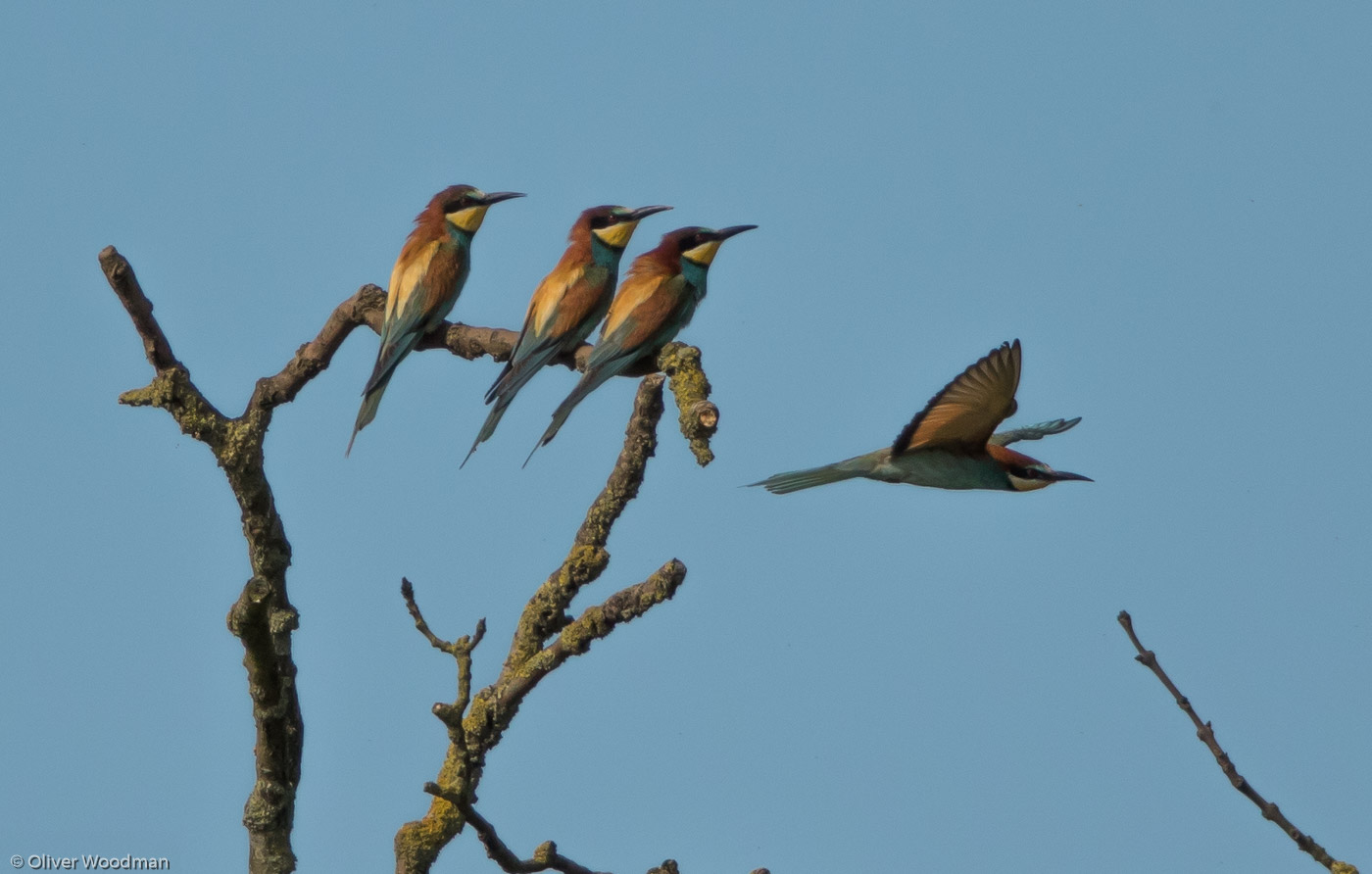
European Bee-eater, East Leake, Nottinghamshire (Photo: Oliver Woodman).

Woodchat Shrike, Boscastle, Cornwall (Photo: Mark Worden).

Red-backed Shrike, Burnham-on-Sea, Somerset & Bristol (Photo: Andy Brown).
Inverdrurie Fish Farm, Highland, attracted a singing Blyth's Reed Warbler on 3rd, while a familiar line-up largely completed the suite of warblers, including the Iberian Chiffchaff near Kelsall, Cheshire, to 28th, the reeling Savi's Warblers at Minsmere, Suffolk, and Hickling Broad, Norfolk, to 3rd and Highland's Icterine Warbler at Nigg Bay to 30th, as well as the Marsh Warbler at Cahore, Co Wexford, belting it out all week. Another Marsh Warbler was on Bressay, Shetland, on 28th. On the Outer Hebrides, the Rose-coloured Starling remained on Barra to 2nd; another was found on Skye, Highland, on 3rd. Common Rosefinches included the shy bird at Portland, Dorset, to 3rd, another lingering on Fair Isle to 29th and new individuals at Blackhall Rocks, Co Durham, and St Margaret's at Cliffe, Kent, on 30th and 1st respectively.
East Coast NR, Co Wicklow, hosted the sole freshly arrived Purple Heron between 30 June and 4 July. The first-summer at Minsmere afforded regular flight views from the Bittern Hide all week. In Shropshire, the American Night Heron extended its residence in the Dingle Gardens in Shrewsbury to 2nd. The male Little Bittern was still performing at Ham Wall, Somerset, to 4th, but just one of the Glossy Ibises remained in the area, with another in Essex, at Daws Heath, on 1st. A drake Green-winged Teal was unexpected in Filey Bay, North Yorkshire, on 29th, when the drake Ring-necked Duck was confirmed as present on Islay. Aberdeenshire's adult drake King Eider supported the White-winged Scoter at Blackdog on 2nd and 3rd, as did a drake Surf Scoter. Ceredigion's female King Eider frequented Aberaeron till 29th before being tracked down at Ynyslas on 4th. Another drake Surf Scoter was picked out in Lunan Bay, Angus, on 30th and was still there the next day. The Pied-billed Grebe on Loch Feorlin, Argyll, remained in residence till 30th at least.
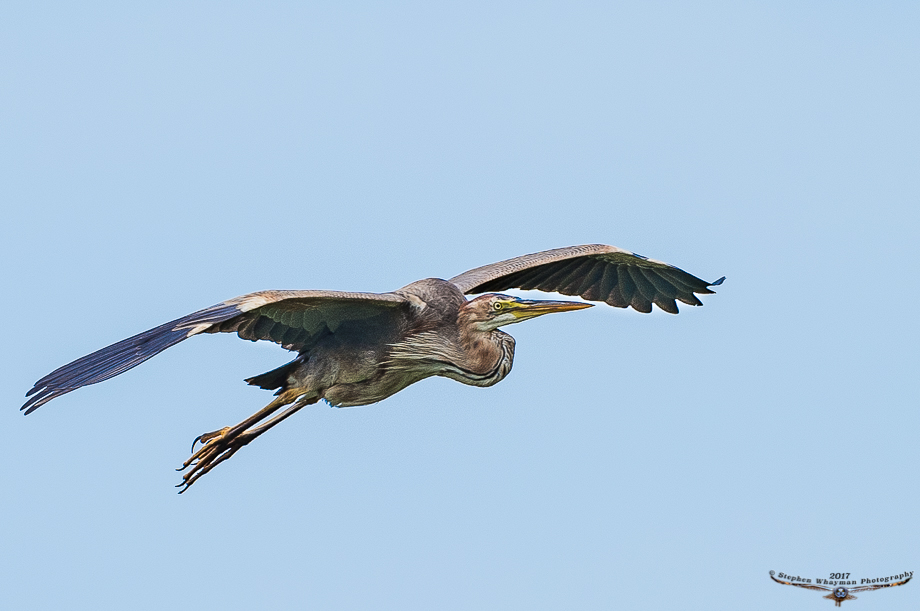
Purple Heron, Minsmere RSPB, Suffolk (Photo: Stephen Whayman).
The first-summer male Red-footed Falcon at Grove Ferry/Stodmarsh, Kent, resurfaced on 28th and went on to show well to 2nd. The only other reports were of one at Sandwich Bay, also Kent, on 28th and an adult female at Market Harborough, Leics, on 2nd. Norfolk's White-tailed Eagle made an appearance over Hingham on 1st.

Red-footed Falcon, Grove Ferry NNR, Kent (Photo: Steve Ashton).
Western Palearctic news
It was fascinating to learn that the Elegant Tern that delighted British birders in June was relocated in France on 4th, just across the English Channel at Oye-Plage, Pas-de-Calais. As mentioned earlier, another old friend, the Black-browed Albatross, was back at base in Germany at Sylt on 1st and remained there till at least 4th.
Among the new discoveries was a stonking male Oriental Plover at Røstlandet in Nordland, Norway. Delighting the country's birders from 29 June to 1 July, it represents the country's first record and just the second for the Western Palearctic. A Great Knot was similarly appreciated on Doñana beach at Huelva, Andalusia, being the second occurrence for Spain. It relocated to Chipiona, Cadiz, later the same day. In Portugal, an adult Cape Gull returned to Quinta de Marim, Olhão, on 30th.
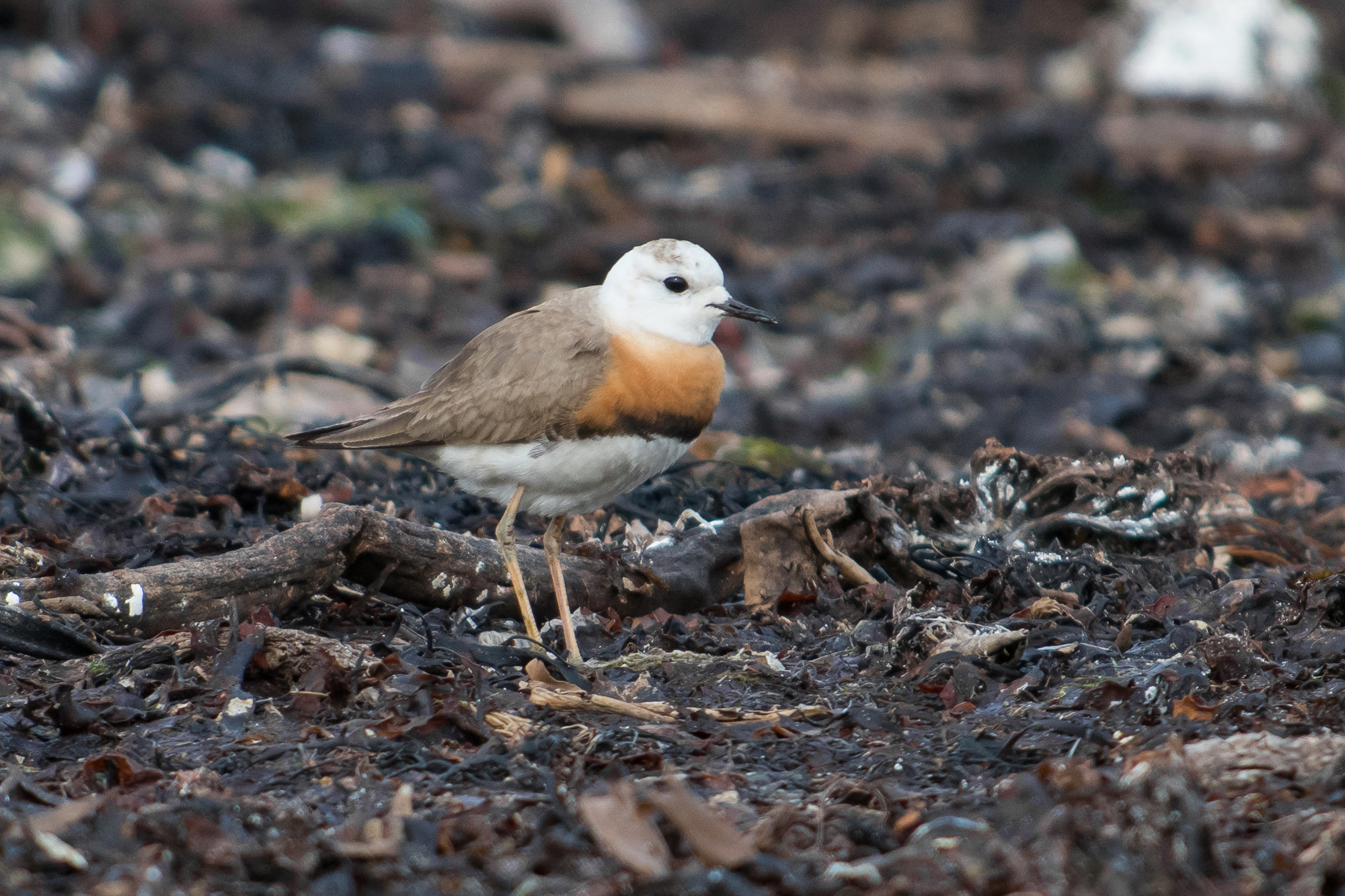
Oriental Plover, Norway (Photo: Steve Baines).
A Blue-cheeked Bee-eater flew over Gooreind, Antwerp, Belgium, on 2nd and a Eurasian Griffon Vulture was seen at Langeland, Denmark, on 4th. Norway's American Black Duck lingered at Hagavågen, Tananger, to 30th and, in the Azores, the Pied-billed Grebe was still on São Miguel on 3rd. Late news from Cape Verde concerned both Ascension Frigatebird and Masked Booby seen on Boa Vista last week.

